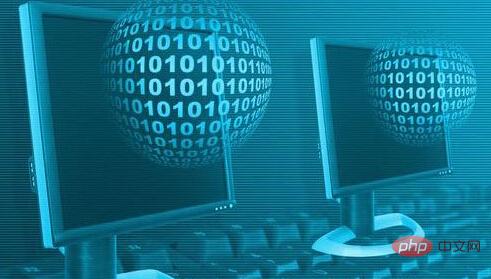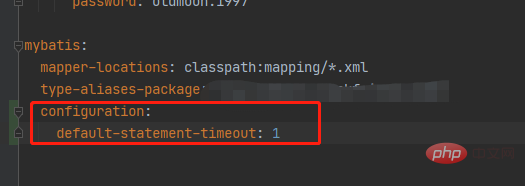sql is a relational database language. Relational database language is a database language with multiple functions such as data manipulation and data definition. This language has interactive characteristics, can provide users with great convenience, and can use SQL language to improve the work quality and performance of computer application systems. efficiency.

SQL is a relational database language,
A relational database language with data manipulation and data definition It is a database language with multiple functions. This language has interactive characteristics and can provide users with great convenience. It can also use SQL language to improve the work quality and efficiency of computer application systems.
Features
1. Storage method: Traditional relational database uses table storage method, and data is stored in rows and columns. , it is very convenient to read and query.
2. Storage structure: Relational databases store data in a structured way. Each data table must define each field (that is, define the structure of the table first). Then the data is stored according to the structure of the table. The advantage of this is that the form and content of the data have been defined before the data is stored, so the reliability and stability of the entire data table are relatively high, but it brings problems That is, once the data is stored, it will be very difficult to modify the structure of the data table.
3, Storage specifications: In order to avoid duplication, standardize data and make full use of storage space, relational databases store data in the form of minimum relational tables, so that data management can It becomes very clear and obvious. Of course, this is mainly the case of a data table. The situation is different if there are multiple tables. Since the data involves multiple data tables, there are complex relationships between the data tables. As the number of data tables increases, data management will become more and more complex.
4, Extension method: Since relational databases store data in data tables, the bottleneck of data operations appears in the operation of multiple data tables, and the more data tables there are, the more this problem arises The more serious it is, if you want to alleviate this problem, you can only improve the processing power, that is, choose a computer with faster speed and higher performance. Although this method can expand the space to a certain extent, the expansion space must be very limited, that is, Relational databases only have vertical expansion capabilities.
5, Query method: Relational databases use structured query language (SQL) to query the database. SQL has long been supported by various database manufacturers and has become the standard in the database industry. , it can support CRUD (add, query, update, delete) operations of the database and has very powerful functions. SQL can use index-like methods to speed up query operations.
6, Normalization: During the database design and development process, developers usually face the need to operate on one or more data entities (including arrays, lists, and nested data) at the same time. , so in a relational database, a data entity must first be divided into multiple parts, and then the divided parts are normalized. After normalization, they are stored in multiple relational data tables respectively. This is a complex process. . The good news is that with the development of software technology, quite a few software development platforms provide some simple solutions. For example, you can use the ORM layer (that is, object relational mapping) to map the object model in the database to the SQL-based relational model. database and convert data between different types of systems.
7, Transactionality: Relational database emphasizes ACID rules (Atomicity, Consistency, Isolation, Durability), which can It meets data operations that require high transactional requirements or complex data queries, and can fully meet the requirements for high performance and operational stability of database operations. And relational databases place great emphasis on strong consistency of data and have good support for transaction operations. Relational databases can control the atomicity of transactions at fine granularity, and can roll back transactions immediately if an operation is incorrect or necessary.
8, Reading and writing performance: Relational databases place great emphasis on data consistency and pay a huge price for reducing reading and writing performance. Although relational databases store data and process data The reliability is very good, but once faced with the processing of massive data, the efficiency will become very poor, especially when encountering high concurrent reading and writing, the performance will drop drastically.
9, Authorization method: Common relational databases include Oracle, SQLServer, DB2, and Mysql. Except for Mysql, most relational databases require a high price to be used. Cost, even free MySQL performance is subject to many limitations.
Recommended tutorial: "sql video tutorial"
The above is the detailed content of What database language does sql belong to?. For more information, please follow other related articles on the PHP Chinese website!
 SQL Server使用CROSS APPLY与OUTER APPLY实现连接查询Aug 26, 2022 pm 02:07 PM
SQL Server使用CROSS APPLY与OUTER APPLY实现连接查询Aug 26, 2022 pm 02:07 PM本篇文章给大家带来了关于SQL的相关知识,其中主要介绍了SQL Server使用CROSS APPLY与OUTER APPLY实现连接查询的方法,文中通过示例代码介绍的非常详细,下面一起来看一下,希望对大家有帮助。
 SQL Server解析/操作Json格式字段数据的方法实例Aug 29, 2022 pm 12:00 PM
SQL Server解析/操作Json格式字段数据的方法实例Aug 29, 2022 pm 12:00 PM本篇文章给大家带来了关于SQL server的相关知识,其中主要介绍了SQL SERVER没有自带的解析json函数,需要自建一个函数(表值函数),下面介绍关于SQL Server解析/操作Json格式字段数据的相关资料,希望对大家有帮助。
 聊聊优化sql中order By语句的方法Sep 27, 2022 pm 01:45 PM
聊聊优化sql中order By语句的方法Sep 27, 2022 pm 01:45 PM如何优化sql中的orderBy语句?下面本篇文章给大家介绍一下优化sql中orderBy语句的方法,具有很好的参考价值,希望对大家有所帮助。
 Monaco Editor如何实现SQL和Java代码提示?May 07, 2023 pm 10:13 PM
Monaco Editor如何实现SQL和Java代码提示?May 07, 2023 pm 10:13 PMmonacoeditor创建//创建和设置值if(!this.monacoEditor){this.monacoEditor=monaco.editor.create(this._node,{value:value||code,language:language,...options});this.monacoEditor.onDidChangeModelContent(e=>{constvalue=this.monacoEditor.getValue();//使value和其值保持一致i
 一文搞懂SQL中的开窗函数Sep 02, 2022 pm 04:55 PM
一文搞懂SQL中的开窗函数Sep 02, 2022 pm 04:55 PM本篇文章给大家带来了关于SQL server的相关知识,开窗函数也叫分析函数有两类,一类是聚合开窗函数,一类是排序开窗函数,下面这篇文章主要给大家介绍了关于SQL中开窗函数的相关资料,文中通过实例代码介绍的非常详细,需要的朋友可以参考下。
 如何使用exp进行SQL报错注入May 12, 2023 am 10:16 AM
如何使用exp进行SQL报错注入May 12, 2023 am 10:16 AM0x01前言概述小编又在MySQL中发现了一个Double型数据溢出。当我们拿到MySQL里的函数时,小编比较感兴趣的是其中的数学函数,它们也应该包含一些数据类型来保存数值。所以小编就跑去测试看哪些函数会出现溢出错误。然后小编发现,当传递一个大于709的值时,函数exp()就会引起一个溢出错误。mysql>selectexp(709);+-----------------------+|exp(709)|+-----------------------+|8.218407461554972
 springboot配置mybatis的sql执行超时时间怎么解决May 15, 2023 pm 06:10 PM
springboot配置mybatis的sql执行超时时间怎么解决May 15, 2023 pm 06:10 PM当某些sql因为不知名原因堵塞时,为了不影响后台服务运行,想要给sql增加执行时间限制,超时后就抛异常,保证后台线程不会因为sql堵塞而堵塞。一、yml全局配置单数据源可以,多数据源时会失效二、java配置类配置成功抛出超时异常。importcom.alibaba.druid.pool.DruidDataSource;importcom.alibaba.druid.spring.boot.autoconfigure.DruidDataSourceBuilder;importorg.apache.
 Monaco Editor怎么实现SQL和Java代码提示May 11, 2023 pm 05:31 PM
Monaco Editor怎么实现SQL和Java代码提示May 11, 2023 pm 05:31 PMmonacoeditor创建//创建和设置值if(!this.monacoEditor){this.monacoEditor=monaco.editor.create(this._node,{value:value||code,language:language,...options});this.monacoEditor.onDidChangeModelContent(e=>{constvalue=this.monacoEditor.getValue();//使value和其值保持一致i


Hot AI Tools

Undresser.AI Undress
AI-powered app for creating realistic nude photos

AI Clothes Remover
Online AI tool for removing clothes from photos.

Undress AI Tool
Undress images for free

Clothoff.io
AI clothes remover

AI Hentai Generator
Generate AI Hentai for free.

Hot Article

Hot Tools

Atom editor mac version download
The most popular open source editor

Dreamweaver Mac version
Visual web development tools

VSCode Windows 64-bit Download
A free and powerful IDE editor launched by Microsoft

SAP NetWeaver Server Adapter for Eclipse
Integrate Eclipse with SAP NetWeaver application server.

EditPlus Chinese cracked version
Small size, syntax highlighting, does not support code prompt function





